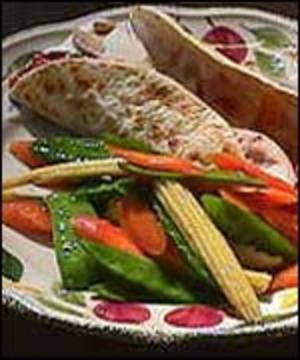Today at lunch a friend and I shared our sandwiches with each other. I had corned beef and she had pastrami. As I compared the two I was surprised at how similar the meats looked and tasted. We wondered what went into the process of making the corned beef and pastrami. I remembered watching my mother make corned beef when I was a child, but couldn’t recall much about how she did it, so I decided to do some research to satisfy my curiosity. What I learned was quite interesting.
Some History and Facts About Corned Beef and Pastrami
Preserving meat has been happening since ancient times. ‘Corning’ is a technique for preserving raw meats for long periods by soaking in salt brine and was used before the days of commercial refrigeration methods were available.
This is a time-honored way of preserving and it prevents bacteria from growing. Both pastrami and corned beef are made by this method. Pastrami is then smoked to add additional flavor and aid in preservation.
Both corned beef and pastrami usually start with a brisket of beef. Corned beef is cured in a brine made from a salt-water solution and then cooked. Pastrami is given a salt and spice rub and either dry cured or cured in the brine the same as the corned beef and then, later smoked. They are the same meat, Just with different treatments and with different results.
The name ‘corned beef’ originated in the early days when the grains of salt used in the brine were called corns. Pastrami comes from the Romanian word pastra which means ‘to preserve’.
The procedure described below uses saltpeter, an original ingredient used in the brine recipe for years. We now know saltpeter may contain carcinogenic and other questionable substances and nitrates. Saltpeter is what adds the traditional red coloring to the corned beef and pastrami meat. If you do not wish to use saltpeter in the brine, you can substitute coarse or non-iodized salt or kosher salt. The meat will not be the usual bright red color; it will be brownish-gray. The flavor and texture of the meat will not be affected.
How to Make Corned Beef:
Assemble the following ingredients:
One good quality beef brisket (approximately 8-10 pounds)
1/4 tsp. saltpeter
2 tsp. paprika
1/4 cup warm water
3 cloves of minced garlic
2 tablespoons sugar
1 tablespoon mixed pickling spices
3/4 cup salt
2 quarts water
Then do the following:
Place the brisket of beef in a large crock.
Dissolve the saltpeter in the warm water,
Add the sugar, minced cloves, paprika and pickling spices to the saltpeter mixture.
Dissolve the 3/4 cup of salt in the 2 quarts of water and mix everything together and pour the mixture over the meat in the crock. Make sure the meat is totally beneath the surface of the liquid.
Refrigerate the crock and contents for 3 weeks, turing the meat once or twice per week. At the end of the third week, remove the crock from the refrigerater and take out the meat. Soak the meat in several changes of fresh cold water to remove the excess salt. Twenty-four hours should be adequate. An alternative to the soaking procedure is to boil the marinated meat in fresh water after the brining stage to remove some of the salt from the meat.
Prepare and cook the corn beef using your favorite recipe.
How to Make Pastrami:
To make pastrami, start with marinated and rinsed corn beef. (Use the above procedure to make the corn beef). Pastrami is traditionally made from the forequarter of the animal from a cut known as the deckle or plate, but it can also be made from brisket.
After your cut of meat has been corned, boiled or rinsed to remove some of the excess salt, the meat is then seasoned and encrusted with a variety of herbs and spices such as peppercorns, seasoned salt, garlic, basil and allspice, then smoked to infuse the flavor and aid in preservation. Smoke the brisket for aoub 45 minutes to an hour per pound. When the internal temp;erature of the meat has reached 165 degrees it is done. It is not necessary to smoke pastrami as long as you would a regular brisket as the long brining time will make the meat tender.
It is very important that absolutely everything, including your hands, that comes in contact with the meat is very clean. Also, make very sure that every inch of the meat reaches the 165 degrees before it is removed from the smoker. The corned beef is now pastrami.
There are many variations of pastrami. Some pastrami is not marinated in the brine solution, but is dry-cured instead in a salt paste for several weeks. Although beef remains the most popular pastrami meat, turkey, duck, tuna, venison, goat and salmon can also be used.






